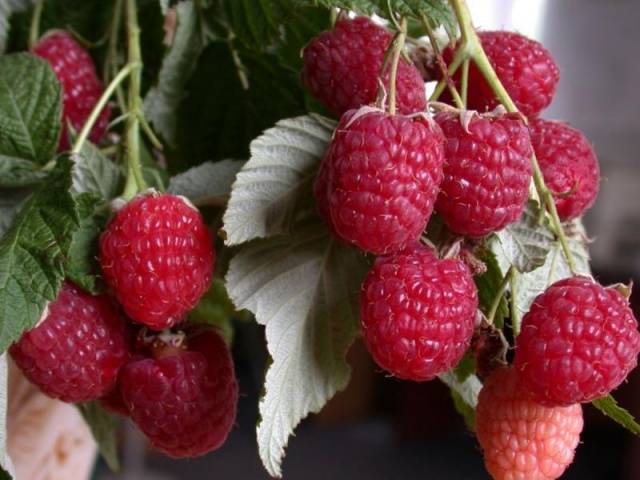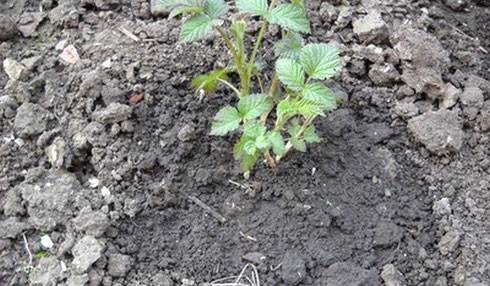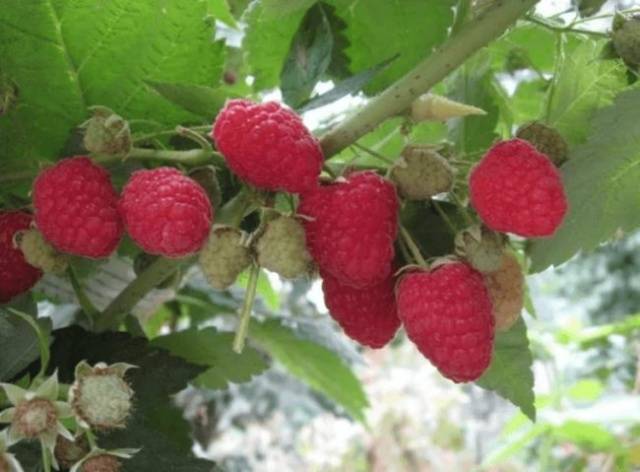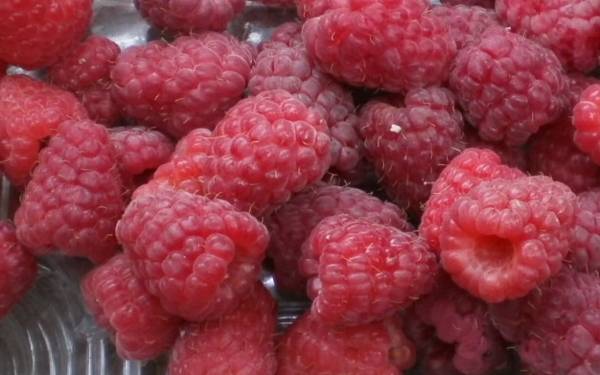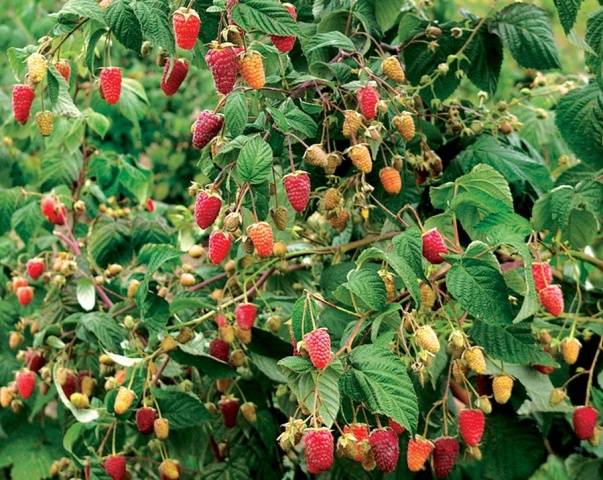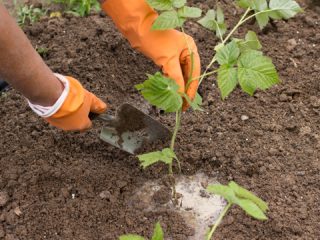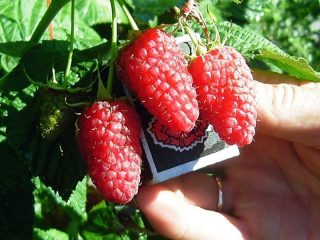Content
Despite the fact that remontant varieties of raspberries have been known for quite some time and are widely grown not only by professionals, but also by ordinary gardeners and summer residents, not everyone understands their growth characteristics correctly. The overwhelming majority of experts agree that remontant raspberries can be called annual. Therefore, it is much more correct to grow it, mowing all the shoots to zero in the fall, and getting one full harvest in late summer or early autumn. But many remontant varieties do not have time to fully mature in a relatively short and cool summer. In this regard, some gardeners of the northern regions, trying to get at least some harvest from such varieties, leave the shoots of remontant raspberries to winter.
Raspberry Eurasia, being a typical representative of remontant varieties, begins to ripen from the beginning of August and therefore may well be used for planting even in regions with short summers. Since by mid-September, the entire crop from the bushes can be fully harvested. And this is not its only advantage. It seems that this variety of raspberries is the very golden mean that is sometimes so difficult to find in an effort to combine the large-fruited berries, and their good yield, and excellent taste. For a description of the Eurasia raspberry variety with photos and reviews of gardeners, see below in the article.
Description of the variety
The raspberry variety Eurasia was obtained back in 1994 from seeds by free pollination of remontant interspecific forms. Kazakov I.V., Kulagina V.L. took part in the selection. and Evdokimenko S.N. At that time, he was assigned the number 5-253-1. After numerous trials since 2005, it has been multiplying as an established variety and has been given the name Eurasia. And in 2008 this variety was registered in the state register of Russia. The patent holder is the Moscow-based Breeding and Technology Institute of Horticulture and Nursery.
Eurasia belongs to remontant varieties, the main difference of which from traditional ones is the real possibility of harvesting on annual shoots. In theory, it can produce crops on two-year-old shoots, like ordinary raspberries, if they are not cut out before winter. But in this case, the load on the bush will be too great and many of the advantages with such a growing method will be lost.
The bushes of Eurasia are distinguished by their upright growth, they are of average growth force and usually do not exceed 1.2-1.4 meters in height. Raspberry Eurasia belongs to the standard varieties, it grows quite compactly, therefore it does not need a garter and the construction of trellises. This, in turn, greatly simplifies the care of the raspberry tree.
Annual shoots by the end of the growing season acquire a dark purple hue. They are characterized by a strong waxy coating and slight pubescence. The spines are of medium size and are bent downward. In the lower part of the shoots, there are especially many of them, on top it becomes much less. Fruit lateral branches of Eurasia raspberry also have a good waxy bloom and slight pubescence.
The leaves are large, wrinkled, slightly curled.
The flowers are medium in size and have simple pubescence.
The variety forms an average number of replacement shoots, about 5-6, root shoots are also formed a little. This amount may be enough for the reproduction of raspberries, at the same time there is no thickening, you do not need to spend a lot of effort on thinning the raspberries.
Unlike many mid-late varieties or those that have an extended fruiting period, Eurasia raspberries ripen quite early and quite amicably. During August, you can manage to collect almost the entire crop and not fall under the first autumn frosts, even when it is grown in relatively cold regions of Russia.
The average yield of Eurasia raspberries is 2.2-2.6 kg per bush, or if translated into industrial units, then about 140 c / ha. True, according to the claims of the originators, with suitable agricultural technology, you can get up to 5-6 kg of raspberries from one bush of the Eurasia variety. The berries ripen more than half the length of the shoots.
The Eurasia variety shows a fairly high resistance to diseases and pests. According to some gardeners, raspberries are susceptible to the broom virus. It looks like too many shoots are formed from one point at the same time.
Due to its powerful root system, the Eurasia raspberry variety is distinguished by high drought resistance, but the heat resistance is average. The latter property means precisely resistance to ambient temperature in conjunction with its humidity.
Characteristics of berries
Eurasia raspberries have the following characteristics:
- The mass of the berries is not very large - on average, about 3.5-4.5 grams. The largest can reach 6.5 grams.
- The shape of the berries is conical with a beautiful dark crimson color without shine.
- They have a good density and at the same time they are quite easily separated from the fruit bed. Even after ripening, the berries can hang on the bushes for about a week without losing their taste and marketability.
- The taste can be noted as sweet and sour; tasters rate it at 3.9 points. The aroma is practically not noticeable, as, however, in most remontant varieties of raspberries.
- The berries contain 7.1% sugar, 1.75% acid and 34.8 mg vitamin C.
- The fruits of Eurasia are well stored and easily transported.
- They are distinguished by their versatility in use - the berries are suitable both for eating directly from the bush, and for various preservation.
Growing features
Raspberry Eurasia is well adapted for growing in almost any climatic conditions and is especially picky about the composition of the soil.
That's just because of the structural features of the root system - in this variety, it belongs closer to the rod type and is able to reach deep soil layers - deeper soil cultivation is necessary before planting new bushes.
In more northern regions, in addition, it is good to plant Eurasia raspberries on high insulated ridges. This will create extra warmth in early spring and help speed up the ripening of the berries.
During planting, a distance of 70 to 90 cm is maintained between the bushes.
Complete mowing of shoots in late autumn is strongly recommended by specialists and, above all, by the authors of the variety themselves for all remontant raspberries, since this method of growing allows you to get the following advantages:
- The winter hardiness of raspberries increases sharply, since there is no need to bend and cover the shoots for the winter.
- By itself, the problem with pests and diseases is removed - they simply have nowhere to stay and winter, which means that processing can also be nullified. Thus, you reduce the work of caring for raspberries and at the same time get a cleaner product.
- Berries ripen in large quantities precisely at a time when traditional raspberries can no longer be found, so the demand for them is increasing.
Gardeners reviews
Gardeners' reviews about Eurasia raspberries may vary depending on the purpose of their cultivation. This variety seems to be one of the best for sale, but for itself and its family it has some disadvantages in taste.
Conclusion
Raspberry Eurasia has many advantages, and although its taste is questionable, this characteristic is so subjective and individual that, perhaps, this particular variety can serve as a compromise between yield and large-fruited, on the one hand, and decent taste, on the other.
